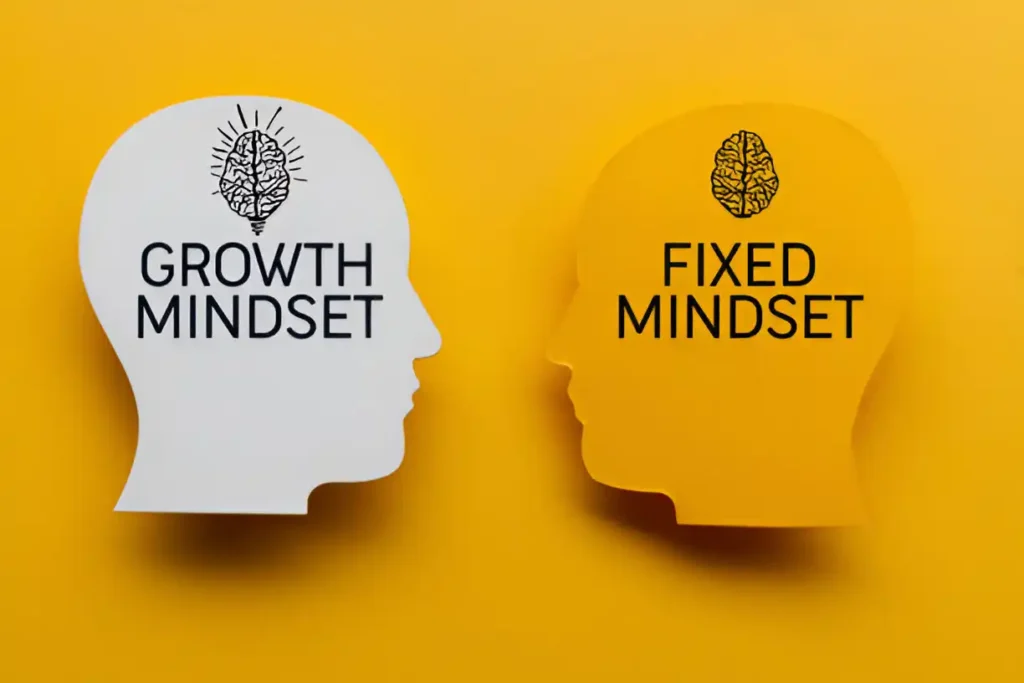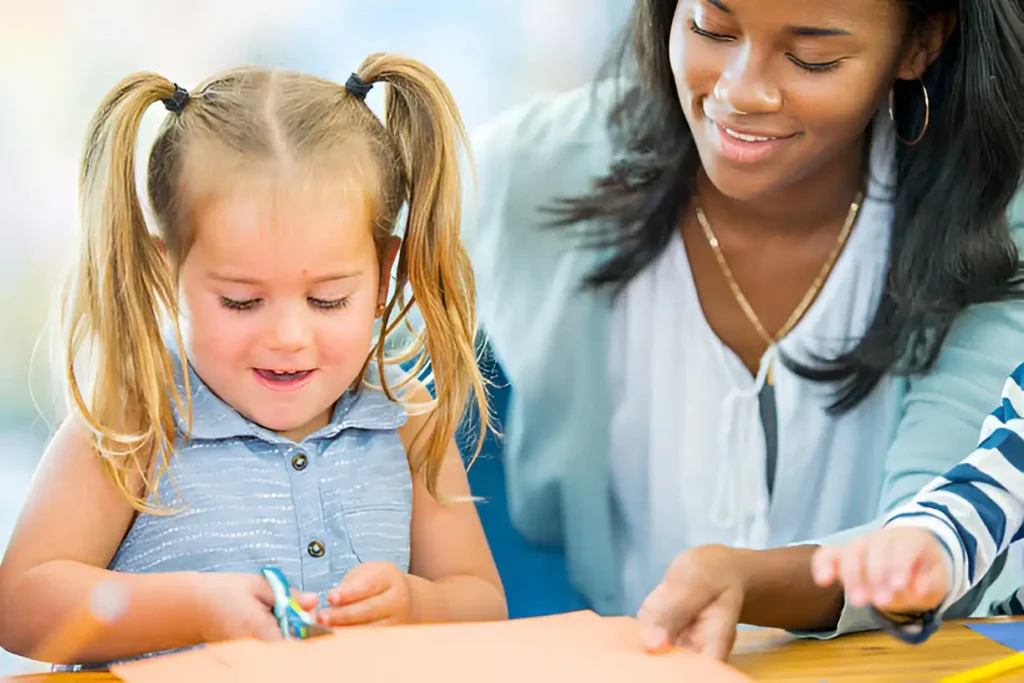Introduction
Raising children who believe in their ability to grow, adapt, and learn is one of the greatest gifts a parent can offer. Instilling a growth mindset—a belief that skills and intelligence can be developed with effort—creates a foundation for lifelong resilience and curiosity. In an ever-changing world, children equipped with this mindset are not only more likely to achieve their goals, but they also learn to navigate setbacks with grace. This article will guide you through five practical steps to cultivate a growth mindset in your child, turning challenges into opportunities for growth.
Why Cultivating a Growth Mindset Matters

The Impact of Mindset on Child Development
Mindset plays a pivotal role in shaping a child’s behavior, motivation, and ability to persevere. Research has shown that children who develop a growth mindset see mistakes not as indicators of failure, but as opportunities for improvement. This orientation towards growth encourages them to push beyond their comfort zones, fostering both academic achievement and emotional resilience. Conversely, a fixed mindset—where children believe their abilities are set in stone—can lead to avoidance of challenges and a fear of failure, stifling growth.
Fixed Mindset vs. Growth Mindset: Key Differences
Understanding the differences between a fixed and growth mindset is crucial. A fixed mindset entails a belief that one’s abilities, intelligence, and talents are static and unchangeable. Children with this mindset may shy away from tasks where success is not guaranteed. In contrast, a growth mindset embraces the idea that talents and abilities can be developed through hard work, learning, and perseverance. This mindset encourages children to embrace challenges, persist in the face of setbacks, and recognize that effort is a path to mastery.
How a Growth Mindset Can Set Your Child Up for Lifelong Success
Adopting a growth mindset early in life lays a foundation for lifelong learning. It equips children with the confidence to tackle new experiences, the patience to learn from mistakes, and the drive to achieve their full potential. This mindset doesn’t just enhance academic performance; it prepares children to navigate the complexities of life, where growth often occurs beyond the confines of the classroom. By fostering a growth mindset, parents can help their children build resilience, adaptability, and a love for lifelong learning.
Understanding the Basics of a Growth Mindset

What is a Growth Mindset?
A growth mindset is the belief that abilities and intelligence can be developed with effort, persistence, and the right strategies. It is not about being the best but striving to get better through hard work, learning from feedback, and taking on challenges as opportunities to grow. It emphasizes the process of learning over the outcome and encourages children to appreciate the journey of improvement.
The Core Principles of Growth Mindset Thinking
The growth mindset revolves around several core principles: embracing challenges, learning from criticism, viewing effort as essential, and finding inspiration in others’ success. These principles create a framework where children see growth as a dynamic process rather than a fixed destination. Instead of fearing failure, they come to understand that effort and learning are integral parts of any achievement.
Common Misconceptions About Growth Mindset
A common misconception is that a growth mindset is simply about encouraging children to work hard. However, effort alone is not enough; it must be paired with strategies, learning from feedback, and adapting approaches. Another misunderstanding is that having a growth mindset means you never experience self-doubt or discouragement. In reality, cultivating a growth mindset involves recognizing these feelings and choosing to persevere despite them.
How to Identify if Your Child Has a Fixed Mindset
Signs of a fixed mindset in children may include avoiding challenges, giving up easily, ignoring feedback, or feeling threatened by the success of others. If your child frequently uses language like “I’m just not good at this” or “I can’t do it,” it may indicate a fixed mindset. Recognizing these signs is the first step toward helping your child shift their perspective and embrace a more growth-oriented approach.
Step 1: Encourage Effort Over Perfection

Why Effort Should Be Celebrated
Celebrating effort, rather than focusing solely on results, teaches children to value the learning process. When effort is acknowledged, children become motivated to try harder, take risks, and persist through difficulties. It helps them see that success is not about being perfect, but about striving for improvement.
The Role of Praise in Fostering a Growth Mindset
Effective praise is specific, effort-focused, and process-oriented. Rather than saying “You’re so smart,” you might say “I’m impressed with how you tried different strategies to solve that problem.” This type of praise encourages children to appreciate their own growth and reinforces the idea that their efforts lead to success.
Examples of Effort-Based Praise vs. Outcome-Based Praise
Effort-based praise: “I noticed how hard you worked on that project; you didn’t give up even when it was tough.”
Outcome-based praise: “You got an A; you’re so smart.”
By shifting towards effort-based praise, parents can help children associate success with hard work, rather than innate talent.
How to Shift the Focus from Results to Effort
Make it a habit to discuss the learning experiences rather than the outcomes. Ask your child questions like “What did you learn from this?” or “What would you do differently next time?” These conversations foster a growth mindset by emphasizing reflection and continuous improvement.
Tips for Helping Your Child Appreciate the Learning Process
Encourage your child to keep a “growth journal” where they document moments of learning, challenges they’ve overcome, and areas they’d like to improve. This practice not only reinforces a growth mindset but also provides a tangible record of their progress.
Activities and Practices That Celebrate Effort
Consider setting up an “effort wall” at home where your child can display work they are proud of, regardless of the grade or outcome. It’s a visual reminder that effort is valued and worth celebrating.
Step 2: Teach the Power of “Yet”

The Importance of Language in Shaping Mindset
Language plays a vital role in shaping how children perceive their abilities. Using the word “yet” when discussing challenges can transform their perspective from one of limitation to possibility. Instead of “I can’t do this,” encourage “I can’t do this yet,” signaling that with time and effort, progress is achievable.
How Using “Yet” Can Transform a Fixed Mindset
“Yet” shifts the focus from what children cannot do to what they are working toward. It reinforces the belief that capabilities are not fixed and that improvement is always possible. This small linguistic change can have a profound impact on how children approach tasks.
Examples of Growth Mindset Statements to Use with Your Child
Instead of “You’re not good at math,” say “You’re still learning math skills, and I can see you’re improving each time.” Use phrases like “You’re making progress” and “Look how far you’ve come” to emphasize growth.
Creating a “Not Yet” Mindset in Everyday Situations
Incorporate the “not yet” mindset into daily conversations by framing challenges as ongoing processes. For example, if your child struggles with reading, you might say, “You haven’t mastered it yet, but look at how much better you’re getting every day.”
Role-Playing Exercises for Practicing Positive Language
Engage in role-playing activities where you and your child take turns expressing frustrations and responding with “yet” statements. This helps children internalize the mindset and apply it in real-life situations.
Turning Setbacks into Growth Opportunities with “Yet”
Teach your child to view setbacks as stepping stones to success. Discuss what went wrong, what could be learned, and what they would try differently next time, emphasizing that the journey is not over.
Step 3: Model a Growth Mindset Yourself

Leading by Example: The Power of Parental Influence
Children often mirror the behaviors and attitudes of their parents. When you demonstrate a growth mindset, they learn to emulate it. Show them how you handle challenges and setbacks with resilience and a determination to improve.
How Your Reactions to Challenges Affect Your Child
If you approach your own challenges with a defeatist attitude, your child may adopt a similar mindset. Conversely, if you view difficulties as opportunities for growth, they are more likely to see their own challenges in the same light.
Sharing Your Own Experiences with Learning and Growth
Talk openly about your own learning experiences, especially those that were difficult. Explain how perseverance helped you grow, and share specific instances where you overcame obstacles.
Tips for Demonstrating Growth Mindset Behaviors
Use growth-oriented language at home, such as “I haven’t figured this out yet, but I’m working on it.” This normalizes the process of struggling and learning as a natural part of growth.
Adopting a Growth Mindset Language at Home
Encourage everyone in the household to adopt growth mindset language. Replace “I’m not good at this” with “I’m learning to get better at this.” This consistent language reinforces a positive outlook.
Setting Realistic and Growth-Focused Goals Together
Work with your child to set goals that are challenging yet attainable. Discuss the steps needed to achieve these goals and celebrate incremental progress along the way.
Step 4: Embrace Challenges and Learn from Mistakes

Why Facing Challenges is Essential for Growth
Challenges are the crucible in which resilience and perseverance are forged. Facing and overcoming difficulties not only builds character but also strengthens problem-solving skills.
Helping Your Child View Challenges as Opportunities
Encourage your child to see challenges as chances to grow rather than obstacles to avoid. Explain that every challenge brings a valuable lesson and that overcoming it will make them stronger.
Stories of Famous Individuals Who Embraced Failure to Succeed
Share stories of well-known figures like Thomas Edison, who viewed each failed experiment as a step closer to success. These examples can inspire your child to keep trying, even when the going gets tough.
Teaching Your Child to Reflect on Mistakes
Teach your child how to conduct a growth-focused debrief by discussing what went well, what didn’t, and what they learned. This reflection turns mistakes into valuable learning experiences.
Journaling or Drawing as a Way to Process Learning Experiences
Encourage your child to document their thoughts and experiences through journaling or drawing. This practice helps them process emotions and reinforces the lessons learned from challenges.
Step 5: Foster a Love for Learning

Creating a Learning-Rich Environment at Home
Set up spaces that stimulate curiosity, such as a reading corner or a craft station. Ensure that learning materials, books, and creative tools are readily accessible.
Setting Up Spaces That Encourage Curiosity and Exploration
Create areas in the house where your child can explore interests, whether it’s a science experiment table or an art corner. This nurtures a sense of wonder and curiosity.
Providing Resources and Activities That Spark New Interests
Expose your child to diverse activities—sports, arts, sciences, music—allowing them to discover what they enjoy and are passionate about. This broadens their horizons and fuels a love for learning.
Encouraging Lifelong Learning Habits
Show your child that learning doesn’t stop outside of school. Support their hobbies, teach them new skills, and explore subjects together to foster an ongoing curiosity about the world.
How to Support Hobbies and Extracurricular Interests
Encourage your child to pursue activities that challenge them, whether it’s learning a musical instrument, playing a sport, or joining a club. These pursuits build character and teach persistence.
The Benefits of Teaching Your Child to Set Personal Learning Goals
Teach your child to set personal, attainable goals. This helps them focus on self-improvement and measure their own progress, reinforcing the idea that learning is a continuous process.
Conclusion
Recap of the 5 Steps to Cultivate a Growth Mindset
Reflecting on these five steps reveals a path that parents can follow to help their children build resilience, embrace learning, and develop the confidence to face any challenge. Each step contributes to a child’s development by instilling the belief that growth is always possible.
How Each Step Contributes to Your Child’s Development
Every step—from celebrating effort to embracing challenges—nurtures a mindset that views growth as a journey rather than a destination. Together, these steps create a foundation for your child’s future success.
Encouragement to Continue Fostering a Growth Mindset
Cultivating a growth mindset is an ongoing process. It requires patience, persistence, and consistent effort, but the rewards are immense. The more you invest in nurturing this mindset, the more your child will benefit.
Final Thoughts and Encouragement for Parents
Remember, small and consistent efforts can lead to big changes over time. By instilling a growth mindset in your child, you’re not just helping them succeed today, but also equipping them to thrive throughout their life.
FAQ
Q: Can a growth mindset really be taught?
A: Yes, a growth mindset can be cultivated through intentional practices like praising effort, encouraging learning, and modeling growth-oriented behaviors.
Q: How long does it take to develop a growth mindset?
A: The time varies for each child, but consistent reinforcement of growth principles can lead to noticeable changes within a few months.
Q: What if my child resists adopting a growth mindset?
A: Resistance is normal. Gradually introduce growth mindset concepts through conversations, stories, and activities that emphasize effort and learning.






Trackbacks/Pingbacks